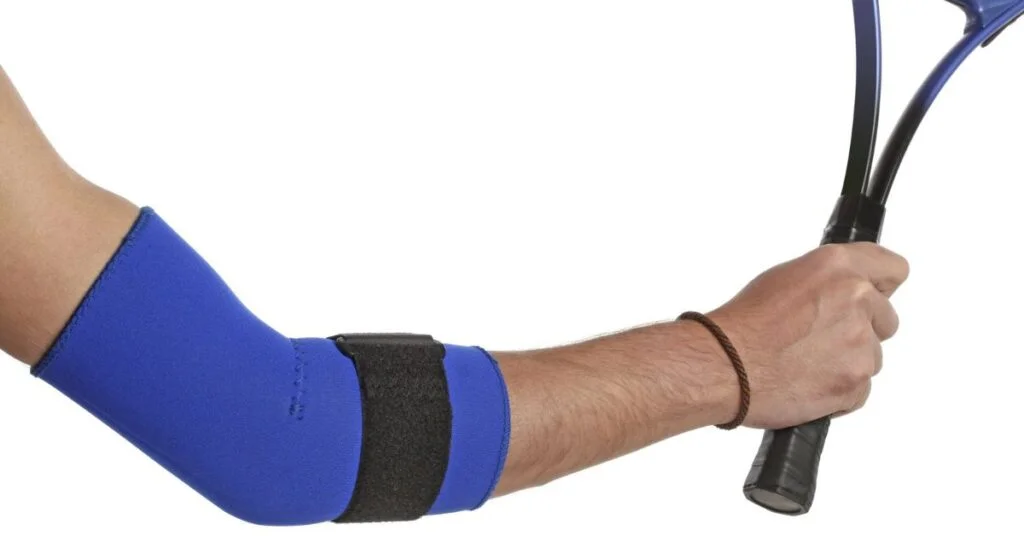Tennis elbow, or lateral epicondylitis, often affects people with work that involves a lot of elbow movements, like extenuation and contraction. These repeated activities can strain and damage tendons in the elbow. By the benevolent fact, there are a lot of methods that are very simple but effective that you can use to ease pain and heal. If you still feel pain you should look for professional treatment for tennis elbow UK.
Rest and Avoid Overuse
Undoubtedly, the rest is what is required for a proper recovery process to take place, at least at the beginning. Eliminate the can that gets worse your golf elbow and therefore should not be involved in such activities or sports that require repetitive arm movements or gripping.
Allow your elbow partial recovery by breaking up or giving up those activities which are for example, playing tennis, lifting weights, or using handles. Giving a rest from the activities that cause symptoms will help give tendons inflamed a chance to heal and allow prevention of further irritation which will in turn help to recover.
Apply Ice Packs
In addition, smoothening by ice packs on the affect part is helpful in the reduction of inflammation and pain associate with tennis elbow. Put a cold wrap or some frozen peas in a small towel, use only one and place in your elbow for 15-20 minutes and repeat that a few times a day.
The coldness of ice on the other hand kind of wriggles the blood vessels, reducing the blood flow to the one affected region by the act of reducing the swell of pain. Make sure to give time for your skin to start getting warm between icing sessions and prevent frostbiting.
Use a Compression Bandage
Wearing a compression bandage or a brace is another important factor that supports the joint at the elbow and makes sure that swelling and pain do not go high. Take a softly fitted bandage that exerts a little pressure on limbs without neglecting the flow of blood. The B&D brace works by containing the compression bandage, which brings stability to the elbow in conjunction with less stress on injured tendons and overall support in healing. Outfit the compression bandage whenever your tendonitis may be aggravated by exercise or movement, but wear it loose enough not to be a pain.

Perform Gentle Stretching Exercises
Performing some simple stretches could pull the muscles while releasing the pressure on tendons when the range of motion of your elbow has been reduced. Try performing the following stretches for tennis elbow:
1. Wrist Extensor Stretch:
Put your arms forward with the face down palms. Also, your arms should be place in front of the body. With other hand control your wrist bent down gradually until you will feel the stretch in your forearm. Count to 15-30, hold and release. Repeat several times.
2. Wrist Flexor Stretch:
Holding the opposite arm to be diagnose to the front next to your body with the palm up. Use your other hand to half bend the wrist upward, making an upward stretch to the forearm. Pause for about 15 – 30 seconds, then breathe out. Repeat several times.
3. Forearm Pronation and Supination:
Whether it is a light dumbbell or you have a small object within your reach such as a hammer, maintain a steady hold of it with one hand. Bring your arm towards the chest to a 90 degree angle, elbow pointed forward. At the beginning, complete the clockwise backward rotation of the forearm to the position that when your thumb is pointing upward (supination). Finally, execute the motion of turning left (pronation) to complete all steps. Initially, perform 10 -15 repeats per side.
By partaking in these stretching exercises, one can help stretching and relaxing the muscles and tendons of the forearm, therefore, the tension and discomfort associated with the elbow injuries can be decreased.
Consider Over-the-Counter Pain Relief
As a means of combating tennis elbow the utilization of counter-channel pain relievers, such as ibuprofen (Advil, Motrin) or naproxen (Aleve), has proven itself to be a helpful intervention that reduces pain as well as inflammation associated with this condition. In the same manner of the last one, you should take medications as prescribed and injected as soon as you have the symptoms.
These medications do not target the main laboratories but work negatively on the catalysts which are involve with the process of prostaglandin synthesis – the substances that are responsible for the path of pain or swelling. Nevertheless, please remember that I am not a medical graduate. It is strongly recommend that you schedule an appointment with your physician first to properly assess your medical situation and to share any underlying medical conditions or medications that you may be taking currently.
Conclusion:
Through this administration of easy yet practical techniques into your routine, you can not only feel the pain from tennis elbow fade away but also facilitate the healing process. Be sure to give yourself enough elbow rest, try ice applications, use compression bandages for support as needed, and perform flexible low intensity exercises. Consider over-the-counter pain medications if necessary too. If you have got the signs or their severity does not improve, follow up with your healthcare provider for further diagnostics and interventions. This tennis elbow is nothing permanent that you won’t be able to go about your daily routine hassle-free after discovering how to be calm with yourself and take good care of yourself.

